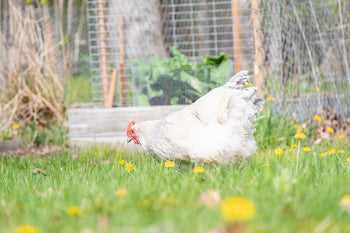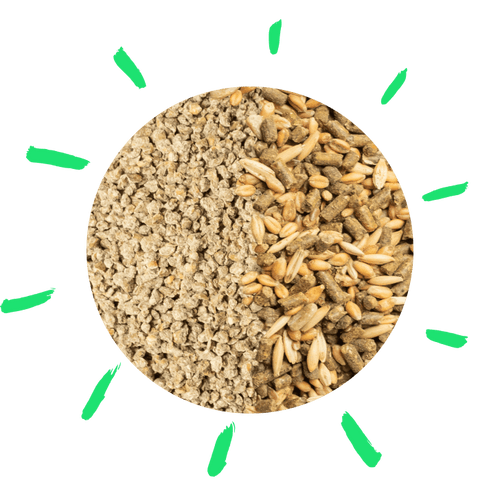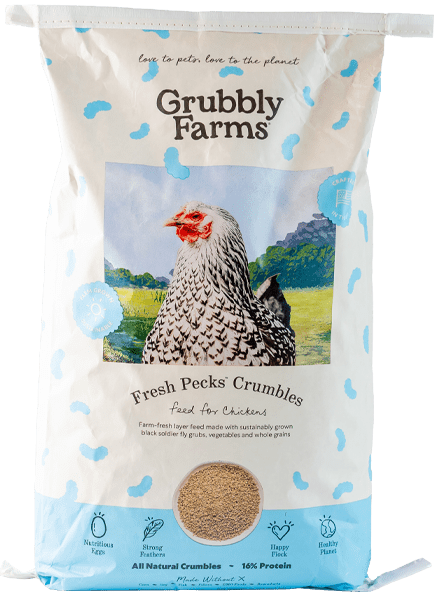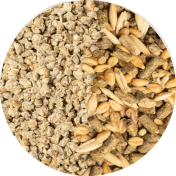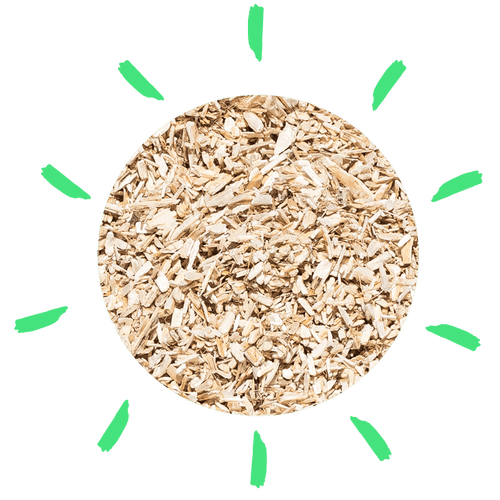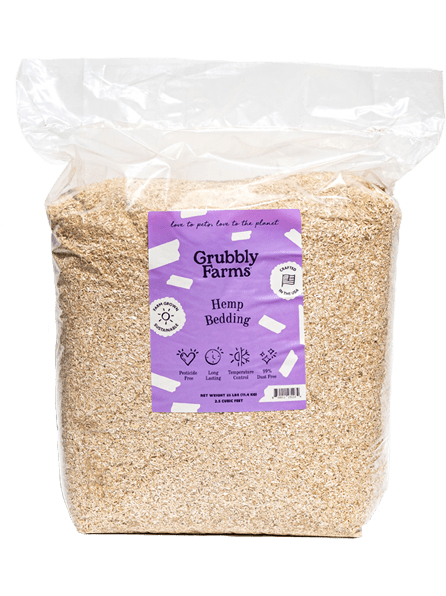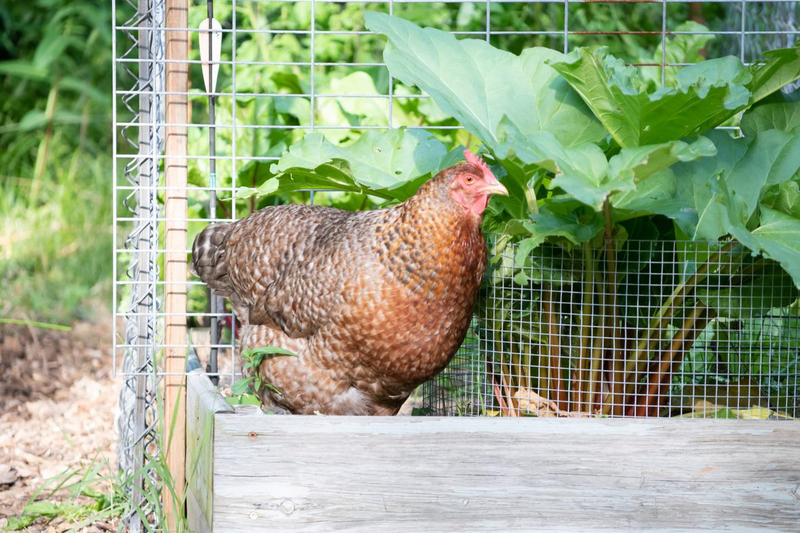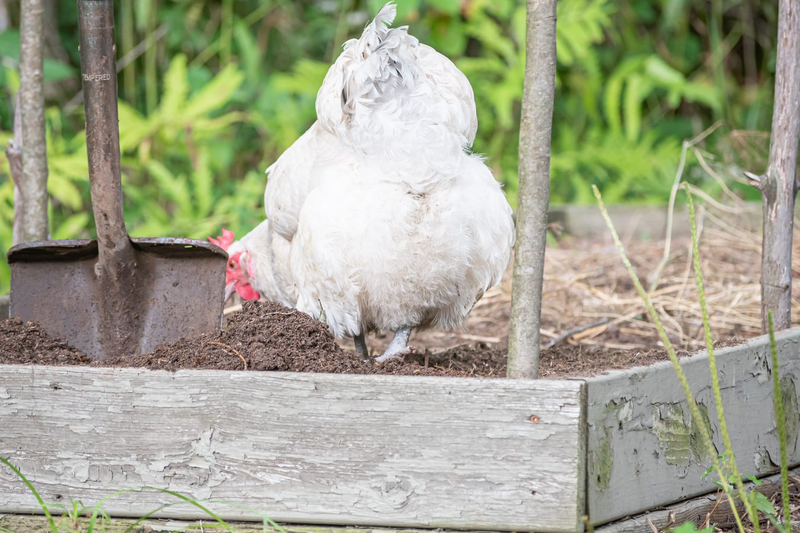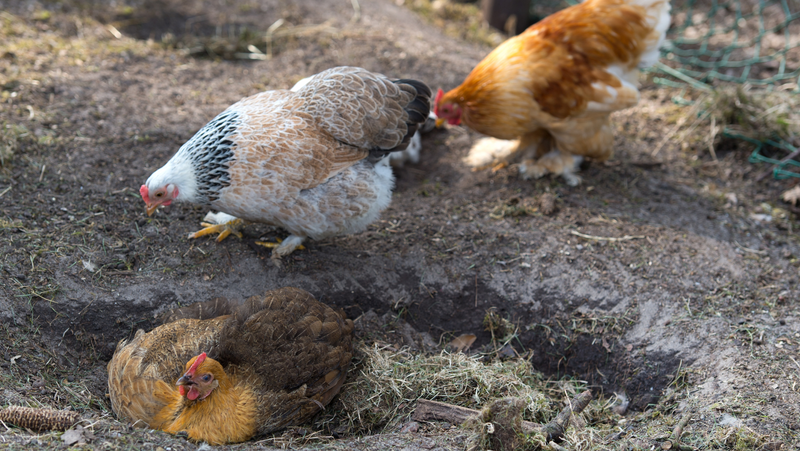Key Takeaways
- Common mildly toxic plants include Ivy, Poinsettia, and Daffodils, while moderately toxic plants include Foxglove and Rhubarb leaves. Stay away from severely toxic plants including Oleander, Yew, and Castor Bean.
- Chickens generally avoid toxic plants, however, accidental poisoning can occur if toxic plants are mixed into their run or proliferate in their foraging areas.
- If you find toxic plants on your property, it's important to identify them, isolate your chickens from the area, and safely remove or relocate the plants. Monitor your chickens for symptoms if exposure is suspected.
Chickens will naturally nibble at various plants as they forage. While most plants that chickens browse on are perfectly safe for them to consume, there are some plants that contain toxins that have varying degrees of severity if consumed by a chicken. Knowing what plants are toxic for chickens and how to identify those plants can help you keep your flock safe and healthy. Learn what plants to avoid and what effects those plants have on backyard chickens!
Understanding Plant Toxicity Levels
Different plants have varying toxicity levels. Some plants contain enough of a toxic compound to kill an animal even if it is consumed in a very small quantity. Other plants need to be consumed in large quantities in order for the toxin to have any significant effect on the animal. The type of toxin a plant contains will play a role in how hazardous the plant is for a chicken. Some toxins are more dangerous than others.
In some plants, their toxicity increases or decreases throughout their growing cycle. The stage of maturity of the plant, the growing conditions, and other environmental factors can all play a role in how toxic a plant is for chickens.
Additionally, different parts of a plant may contain toxins while other parts of the plant are perfectly safe to consume. Different parts of a plant that may contain toxins include the leaves, roots, flowers, seeds, or bark of a plant.
Thankfully, most toxic plants are unpalatable for chickens. In general, chickens will instinctually avoid toxic plants when they are foraging. However, chickens who are hungry enough will consume anything edible in the vicinity, which may include toxic vegetation. Chickens are also browsers, so as they forage, they nibble at various plants here and there. If a plant is highly toxic, even an accidental nibble can prove fatal. Accidental plant poisoning can also occur if a toxic plant gets mixed into chicken feed or is tossed into the chicken run with a handful of other safe weeds.
There are varying degrees of toxicity that can be dangerous for chickens. The degree of toxicity of a plant will depend on the strength of the toxin. Mildly toxic plants contain weak toxins or only contain small amounts of a toxin. A chicken would have to consume a large quantity of the plant to be affected by the toxin. Moderately toxic plants contain slightly stronger toxins or higher concentrations of a toxin. Severely toxic plants contain strong toxins or high dosages of a toxin that have immediate effects if consumed or even touched.
Mildly Toxic Plants

Here are some common plants in North America that are mildly toxic to chickens (2):
- Ivy (Hedera spp.)
- Poinsettia (Euphorbia pulcherrima)
- Daffodils (Narcissus spp.)
- Angel Wings (Caladium bicolor)
- Skunk Cabbage (Symplocarpus foetidus)
- Virginia Creeper (Parthenocissus quinquefolia)
- Buckeye (Aesculus spp)
- Hydrangea (Hydrangea spp)
Mildly toxic plants need to be consumed in large quantities in order to have any effect on a chicken. However, since chickens are a small animal, the amount of plant they need to consume in order to be affected is still less than what we would have to consume to be affected.
Just because a plant is mildly toxic doesn’t mean it has mild effects, it just means that more of the plant needs to be consumed in order for the effects to show as symptoms. Some mildly toxic plants contain the toxin lycorine. Lycorine lowers the blood pressure and can cause seizures. Other mildly toxic plants contain a family of toxins that include saponins, alkaloids, and glycosides. These toxins can cause convulsions, anemia, ascites, deformities, and lethargy.
Here are some symptoms a chicken may exhibit after ingesting a mildly toxic plant:
- Low blood pressure
- Seizures
- Loss of appetite
- Lethargy
If you realize that you have some mildly toxic plants on your property, there are some precautions you should take to discourage your flock from foraging near those plants. As long as your flock has plenty of other forage options, they will more than likely avoid the toxic plants on their own.
Chickens who have plenty of vegetation to forage in will only take nibbles of various plants, so if they happen to take a nibble of a mildly toxic plant the chicken’s body will probably be able to flush out the toxin on its own. To discourage your flock from foraging in areas where there are mildly toxic plants, fence off the garden or area where the plants are located.
Moderately Toxic Plants



Here is a list of some common plants in North America that are moderately toxic to chickens (2):
- Foxglove (Digitalis purpurea)
- Rhubarb leaves (Rheum rhabarbarum)
- Nightshades (Solanum spp)
- Lupins (Lupinus spp)
- Oak (Quercus spp)
- Cassava (Manihot esculenta)
- Horsetail (Equisetum spp)
- Mistletoe (Viscum album)
- Sweet Pea (Lathyrus odoratus)
These moderately toxic plants contain different toxins or higher levels of toxins than the mildly toxic plants. Some of these plants contain toxins such as cardiac glycosides, oxalic acid, or solanine. Cardiac glycosides are compounds that affect the heart. Oxalic acid causes crystals to form in the urinary tract and can cause kidney damage. Solanine causes gastrointestinal distress, lethargy, and affects the nervous system.
Here are some symptoms that a chicken may exhibit after ingesting a moderately toxic plant:
- Kidney failure
- Trouble breathing/respiratory failure
- Diarrhea
- Low blood pressure
- Low heartbeat
- Shock
- Weakness
- Incoordination
- Prostration
- Dilated eyes
Since moderately toxic plants are more dangerous to chickens, you should take steps to eliminate access to these plants on your property. Keep your chickens away from moderately toxic plants by fencing off access to those plants. Some moderately toxic plants, like oak (Quercus spp), are hard to limit access too, especially if you live in a wooded area. Thankfully, oak is naturally unpalatable for chickens, and you will rarely find chickens nibbling on oak leaves as long as they have other forage to keep them busy.
Other moderately toxic plants may sneak into the table scraps you give your flock. Pay careful attention to what leftover foods you give your chickens. Unripe tomatoes, unripe potatoes, lots of onion, and avocado peels or pits can all be toxic to chickens if consumed in large quantities or on a frequent basis.
Severely Toxic Plants
Here is a list of some common plants in North America that are severely toxic to chickens (2):
- Oleander (Nerium oleander)
- Yew (Taxus spp.)
- Castor Bean (Ricinus communis)
- Black Locust (Robinia pseudoacacia)
- Cocklebur (Xanthium strumarium)
- Larkspur (Delphinium spp)
- Mountain Laurel (Kalmia latifolia)
- Sago Palms (Cycas spp)
- Poison Hemlock (Conium maculatum)
- Water Hemlock (Cicuta virosa)
- Lily of the Valley (Convallaria majalis)
- Foxglove (Digitalis purpurea)
These severely toxic plants contain strong toxins that can have immediate and fatal effects on chickens. The highly toxic compounds in these plants can include toxins such as taxine alkaloids, piperidine alkaloids, and cicutoxin. Taxine alkaloids are known to cause sudden death and can be fatal even if an animal only consumes .1% of its body weight of the plant(2). Piperidine alkaloids are dangerous because they lead to depressed nerve function. Cicutoxin is a neurotoxin and can also cause rapid respiratory failure.
Here are some symptoms a chicken may exhibit if it consumes even just a small amount of a highly toxic plant:
- Sudden death
- Seizures
- Purplish comb & wattles
- Respiratory failure
- Rapid pulse
- Dilated pupils
Since severely toxic plants are highly hazardous to chickens, you should take every measure possible to eliminate severely toxic plants from your property. Do a tour of the area where your chickens forage and look for severely toxic plants. If you find any, dig up the plants to remove them completely from your property. Mowing down the plants does not always work as the roots are still present so that the plant can regrow. Additionally, mowing or trimming the plants can spread around the seeds and cause the plant to become more profuse.
What to Do if You Find Toxic Plants on Your Property
If you find mildly or moderately toxic plants on your property, you may consider getting rid of them for the safety of your flock. If the plants are severely toxic, getting rid of them is mandatory to keep your flock safe and healthy. Here are some steps you can take to get rid of toxic plants on your property:
- Identify and confirm the plant species. Use a plant field guide or ask an expert to confirm the identification of the toxic plant.
- Isolate chickens from the area. Fence off the area or keep your chickens penned in their enclosure until you can get rid of the toxic plant.
- Remove or relocate the plant safely. If relocation is possible, move the plant to an area where your chickens cannot access it. If relocation is not possible, get rid of the plant entirely by digging it up and burning it or taking it to a brush disposal location.
- Monitor your chickens for symptoms if exposure is suspected. If you suspect your flock had access to the plant prior to you removing it, keep an eye on the behavior of your chickens to catch any symptoms of plant poisoning as soon as possible.
Tips on Safely Removing Toxic Plants
Some toxic plants are dangerous enough that even just touching them can cause a reaction. Plants such as poison hemlock can have deadly effects if they come in contact with bare skin. Other plants such as daffodils, lily of the valley, or hogweed, are only toxic if they are ingested.
When dealing with toxic plants, you should take some safety precautions to prevent the toxic plant from affecting you! Make sure you wear protective clothing, such as gloves, long shirt sleeves, long pants, and high boots when handling toxic plants. Always wash your hands and any clothing you wear after dealing with a toxic plant. Thankfully, most plants are only toxic if they are consumed, however, some plants have oily residue on their leaves or in their stems that can be toxic or cause skin irritation.
Use a spade or shovel to dig up the toxic plant to avoid handling the plant as much as possible. A sharp spade or shovel will also help you dig down to the roots of the plant so that you can remove as much of the plant as possible. Removing the roots of the plant can help prevent the plant from regrowing.
Alternatives to Toxic Plants That are Safe for Chickens



Thankfully, there are many plants that are perfectly safe, and even beneficial, for chickens! Even if you must avoid planting certain flowers or have to remove toxic plants from your property, there are plenty of alternative plants you can plant instead.
Here are some good plants to have in your garden, around your chicken coop, or on your property that are safe for chickens:
- Herbs- parsley, thyme, oregano, mint, rosemary
- Vegetables- carrots, leafy greens, peas, pumpkins, squash
- Fruit Trees- apples, pears, cherries
- Flowers- nasturtium, violets, begonia, marigolds, sunflowers, coneflowers, roses, carnations, geranium, impatiens, lilac, pansy
Signs of Poisoning in Chickens
While plant poisoning is not common in chickens, you should at least be familiar with the signs and symptoms that a chicken might exhibit if it is experiencing plant poisoning. Here are some common symptoms to watch for that indicate poisoning in chickens (1):
- Diarrhea
- Seizures/tremors
- Lethargy
- Loss of appetite
- Muscle tremors
- Dilated pupils
- Organ failure
- Incoordination
If you suspect poisoning in your flock, immediately isolate the birds who are showing symptoms. Plant poisoning can be individual cases or a flock-wide problem depending on how many birds consumed the toxic plant. Examine the area where the chickens were last foraging and look for toxic plants that could have caused the poisoning. If you are able to identify the toxic plant that the chicken consumed, you may be able to consult a veterinarian or avian expert for specific steps to take on treating the poisoning.
If you are not able to verify that the symptoms are from plant poisoning, proceed with supportive care for the affected chickens. Make sure the birds have access to fresh, clean water and a balanced diet of chicken feed. Keep them away from extreme elements and make them as comfortable as possible. Consult a veterinarian if the symptoms get worse.
If you can confirm that a chicken is suffering from poisoning, whether it is plant-based or not, there are some at-home first aid remedies you can try. Certain natural foods act as flushes or can naturally remove toxins from the body.
Here are some natural flushes you can use on chickens who are suffering from poisoning:
Biochar- Biochar, or commonly known as pharmaceutical-grade activated charcoal, helps counteract toxins in the body. Wild animals have been known to instinctively consume charcoal from burned areas, so it is not unnatural for a chicken to consume biochar. Since biochar is so porous, it soaks up the toxins in the body and removes them when the biochar is excreted(1). Biochar has no nutritional value other than being helpful for removing toxins from the body. Offer biochar free-choice to birds who you suspect are suffering from poisoning.
Epsom Salts- Epsom salts can be used as a laxative flush to help remove toxins from the digestive system rapidly. You can mix Epsom salts into your flock’s feed or water to use it as a toxin flush. When mixing into feed, add 1 pound of Epsom salts to 15 pounds of feed and offer the feed for 1 day(1). To mix into water, add 1 teaspoon of Epsom salts to 2 tablespoons of water and administer that dosage two times a day for 2-3 days or until you see an improvement in the chicken (1).
When buying Epsom salts to use as a toxin flush for chickens, make sure you buy pure Epsom salts. Don’t buy Epsom salts that are mixed with other ingredients or have fragrances added to them.
Molasses- Molasses is another laxative flush that is safe to use on chickens. To use molasses as a flush, combine 2 cups of molasses with 5 gallons of water(1). Offer the molasses water for no longer than four hours, then replace the water with fresh, clean drinking water.
Milk- Since chickens cannot digest milk very well it can make an effective flush for removing toxins from the body. Dry milk powder is generally used when doing a milk flush on chickens. You should mix 1 pound of dry milk powder into 3 pounds of feed and feed for one day(1).
When doing laxative flushes to treat plant poisoning in chickens, keep in mind that the flushes will make a mess! Laxative flushes work by rapidly removing toxins from the digestive system, which causes digestive upset and severe diarrhea. Make sure you help your chickens rehydrate after doing a laxative flush. You can do that by adding electrolytes to clean drinking water for several days after a laxative flush.
You should also clean up the diarrhea caused by laxative flushes as soon as possible during and after the flush. By cleaning up the diarrhea quickly, you can prevent the spread of toxins that got flushed out.

Conclusion
Plant poisoning can cause health issues and can even be fatal for chickens. Different types of plants have various toxicity levels, so being able to recognize mildly toxic plants, moderately toxic plants, and severely toxic plants is important for keeping your backyard flock safe. Be proactive about eliminating hazardous plants on your property and know how to treat plant-poisoning so you can be prepared if an emergency should arise. Gardening responsibly and searching your flock’s free-range territory for hazardous plants can prevent plant poisoning from being an issue in your flock!
Sources:
- Damerow, Gail. The Chicken Health Handbook: A Complete Guide to Maximizing Flock Health & Dealing with Disease. Storey Publishing, 2015
- Toxic Plants to Chickens A-Z | PoultryDVM (chickendvm.com)





